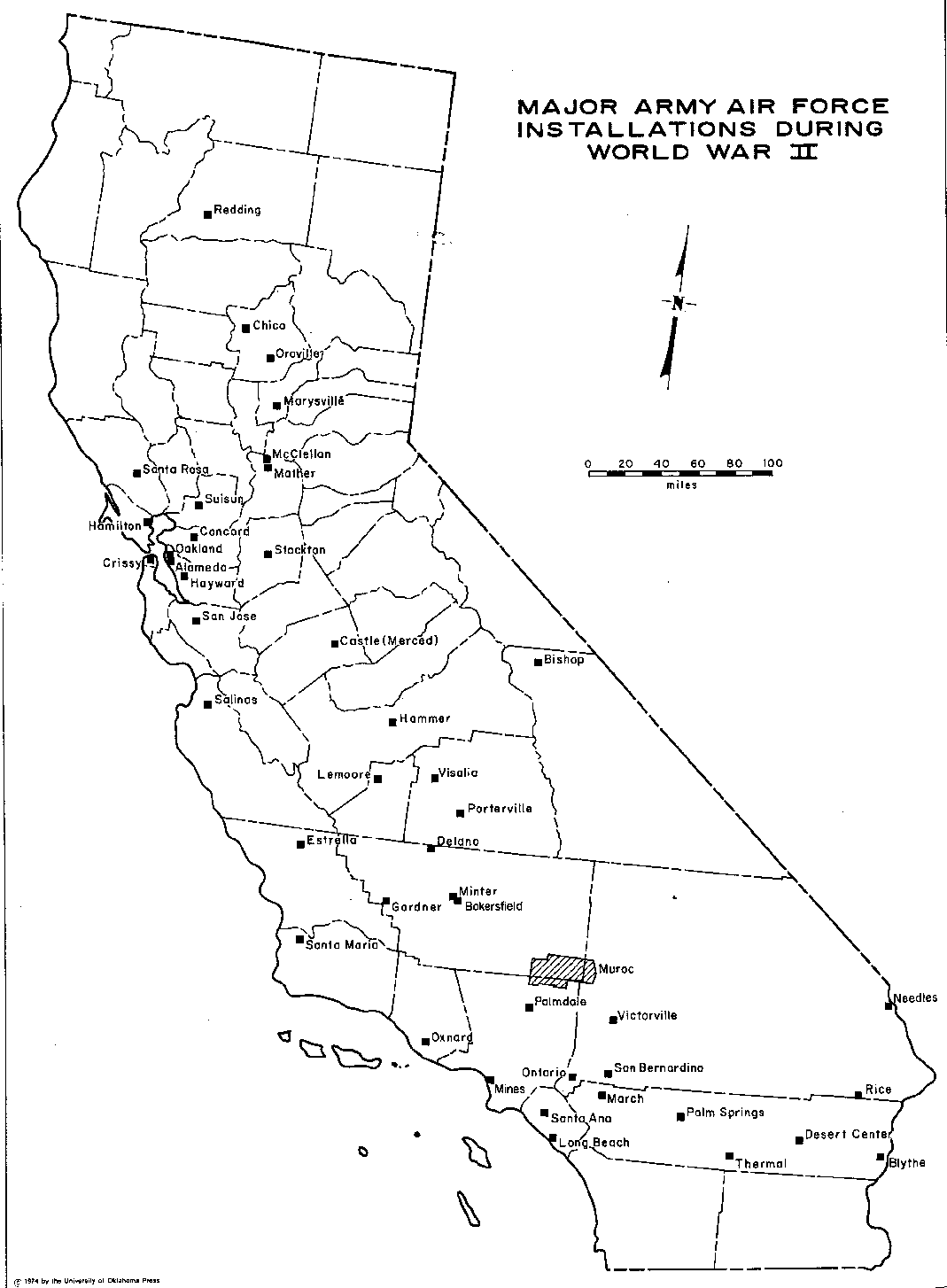
California was a preferred area for Army
Air Force installations for two reasons: first, bases had to be
located for purposes of continental defense, and there was fear
of a Japanese attack on the West Coast during the first two years
of war; second, the state was a desirable area for training because
weather conditions seldom curtailed flying. Most airfields in
California were multi-purpose; they had to be suitable for employment
by bombardment, fighter, and air support aviation. After the emergency
created by Pearl Harbor, the Air Force utilized municipal air
fields extensively. In addition, the Army Air Forces maintained
commands at several naval installations at various periods during
the war. In some instances, the services even exchanged or loaned
their facilities. For example, Moffett Field (Sunnyvale) was originally
built as a naval dirigible base in 1930 but was transferred to
the Army in 1935. However, it was returned to navy control in
1941, but the Army Air Force continued a command at the base.
After 1943, several Army Air Fields were used by the Navy. The
Army Air Forces trained pilots at private flying schools (under
military supervision), mechanics at civil or factory training
schools, and meteorological instruction was given at colleges
and universities. Thus, Army Air Forces
installations in California were so numerous that only the most
important have been designated.
Some airfields, like March, dated back to World War I, but most were built just before or during the first two years of World War II. Hamilton Field was constructed early in the 1930'S to protect the San Francisco area and became headquarters for the 4th Air Support Command. The Sacramento Air Depot (McClellan Field) was activated in 1939. San Bernardino was the site of a second air depot. The dry lake bed at Muroc was first used as a bombing and gunnery range in 1933, but was used to train B-29 pilots in 1945 (later Edwards AFB). Stockton airport was taken over by the military in 1940. Gardner, Hammer, Mather, and Minter Fields were authorized in the fall of 1940 and were active by the following spring. Lemoore, Chico, Merced (Castle), and Victorville (George) were planned but not finished before the outbreak of war. Salinas became the base for the observation squadrons when Moffett Field was regained by the Navy. Fairfield-Suisun (later Travis) was an important part of the Air Transport Command. The facility at Santa Maria was the first authorized in California after Pearl Harbor. In early 1942 Air Force tactical units moved to airports at San Bernardino, Long Beach, Bakersfield, Oakland, Sacramento and Mines Field (Inglewood). The Santa Ana Army Air Field opened in February, 1942, as the aviation cadet classification center for the West Coast.
All of the Army Air Forces installations had sub-bases and auxiliary fields to handle the increased personnel assigned to them. Some, such as Rice, were small, with quarters for only 20 officers and 100 enlisted men and a single airstrip. Others utilized tents, field kitchens, and similar temporary facilities. This was especially true of the bases used to support desert training. Small fields were also necessary adjuncts to army ground forces training installations.
